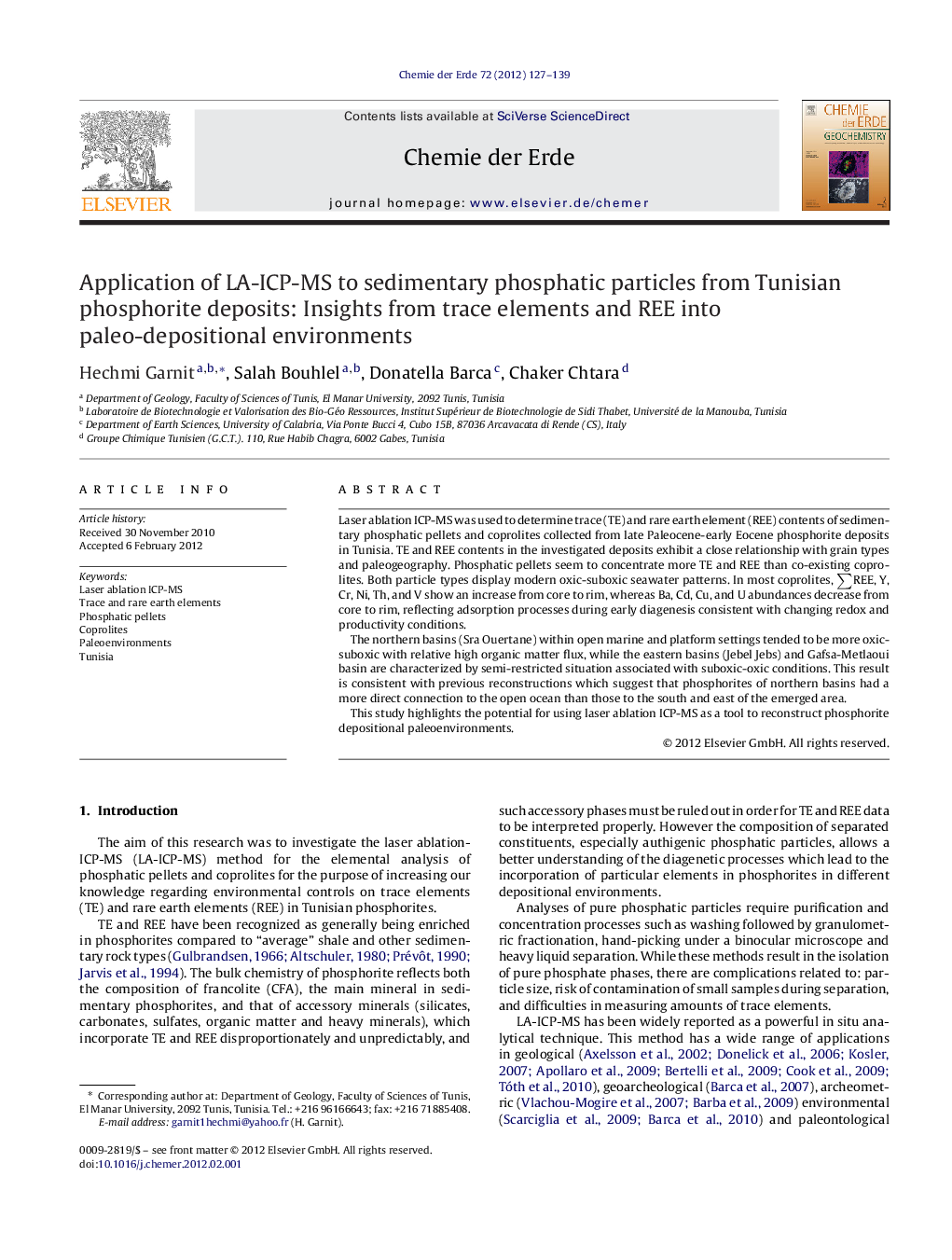| Article ID | Journal | Published Year | Pages | File Type |
|---|---|---|---|---|
| 4406903 | Chemie der Erde - Geochemistry | 2012 | 13 Pages |
Laser ablation ICP-MS was used to determine trace (TE) and rare earth element (REE) contents of sedimentary phosphatic pellets and coprolites collected from late Paleocene-early Eocene phosphorite deposits in Tunisia. TE and REE contents in the investigated deposits exhibit a close relationship with grain types and paleogeography. Phosphatic pellets seem to concentrate more TE and REE than co-existing coprolites. Both particle types display modern oxic-suboxic seawater patterns. In most coprolites, ∑REE, Y, Cr, Ni, Th, and V show an increase from core to rim, whereas Ba, Cd, Cu, and U abundances decrease from core to rim, reflecting adsorption processes during early diagenesis consistent with changing redox and productivity conditions.The northern basins (Sra Ouertane) within open marine and platform settings tended to be more oxic-suboxic with relative high organic matter flux, while the eastern basins (Jebel Jebs) and Gafsa-Metlaoui basin are characterized by semi-restricted situation associated with suboxic-oxic conditions. This result is consistent with previous reconstructions which suggest that phosphorites of northern basins had a more direct connection to the open ocean than those to the south and east of the emerged area.This study highlights the potential for using laser ablation ICP-MS as a tool to reconstruct phosphorite depositional paleoenvironments.
